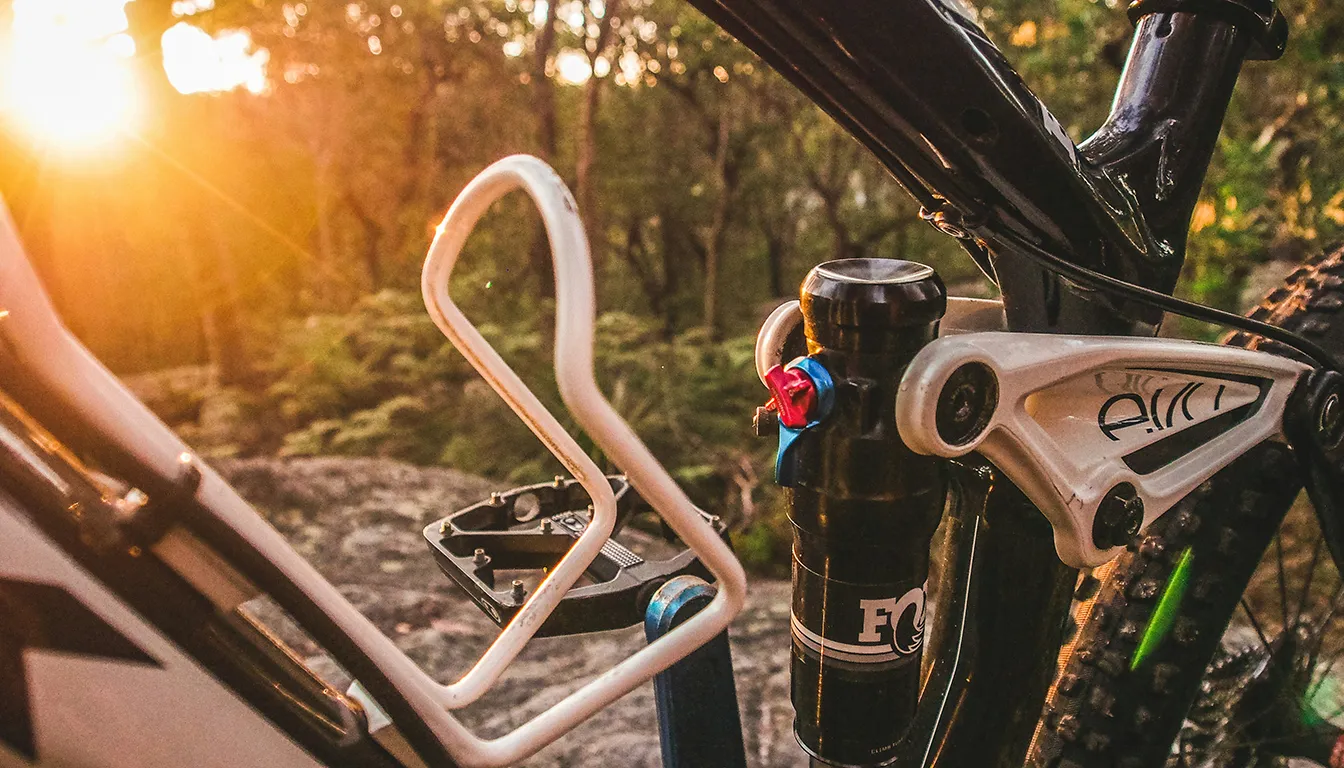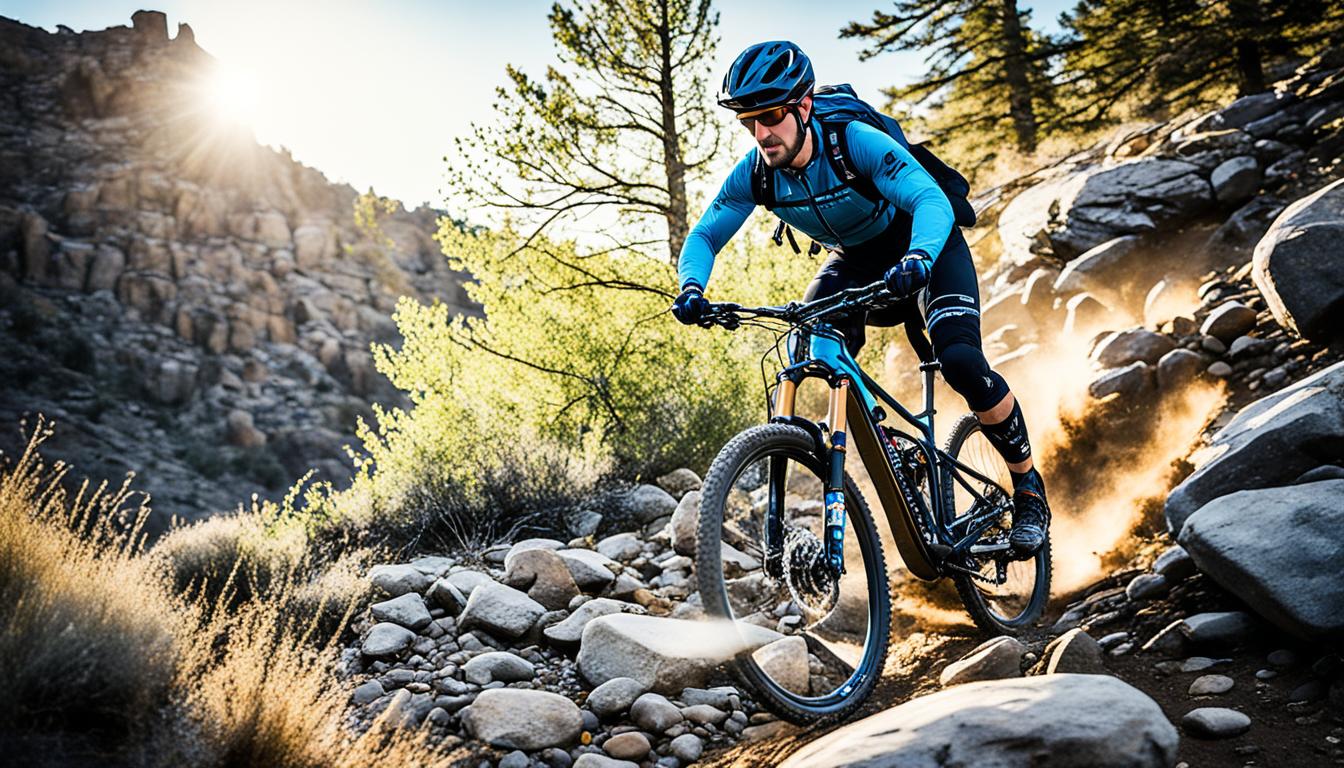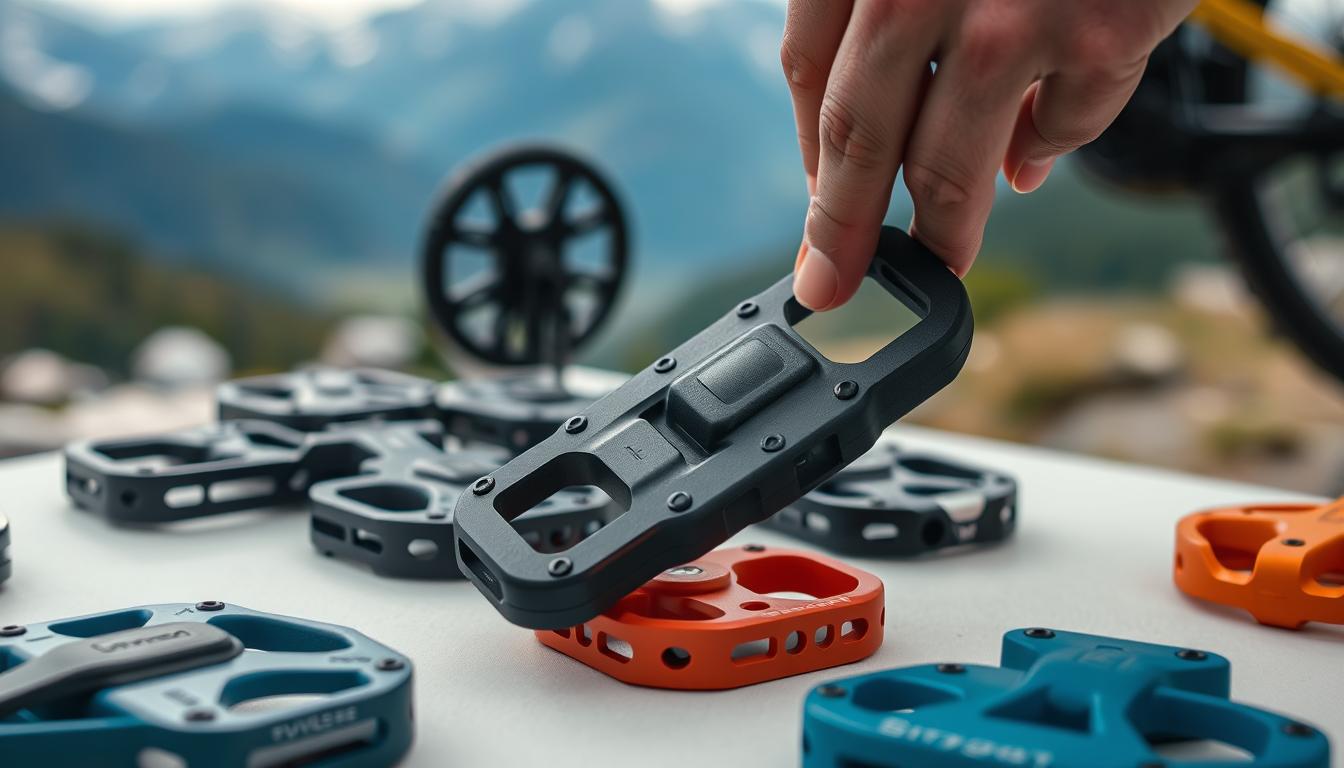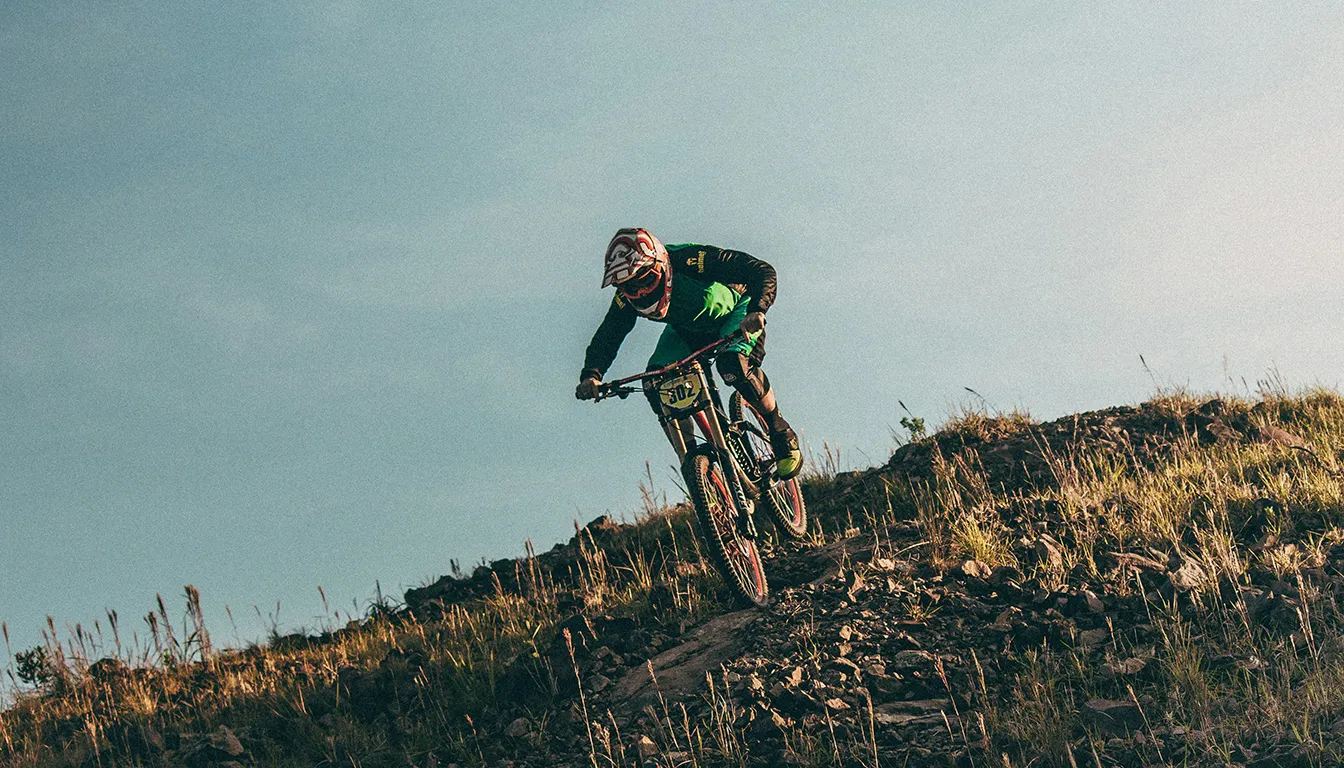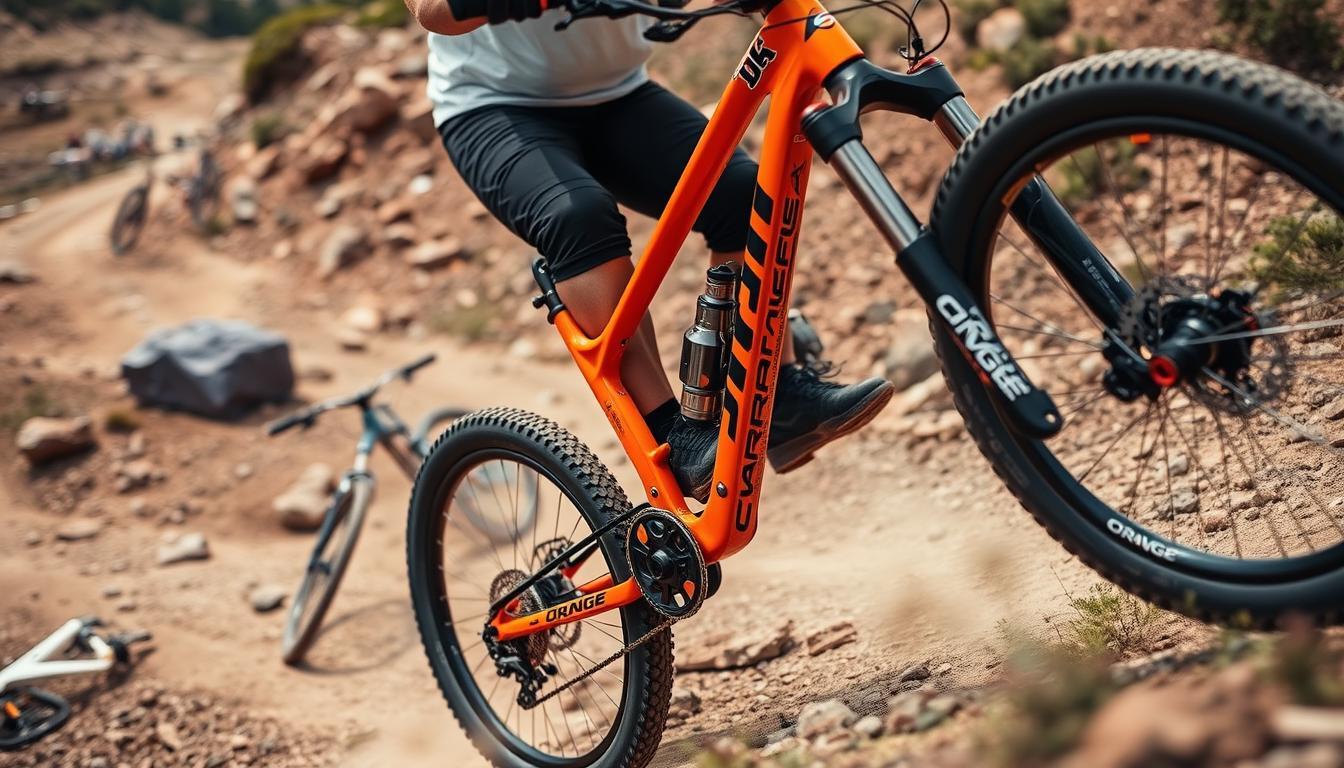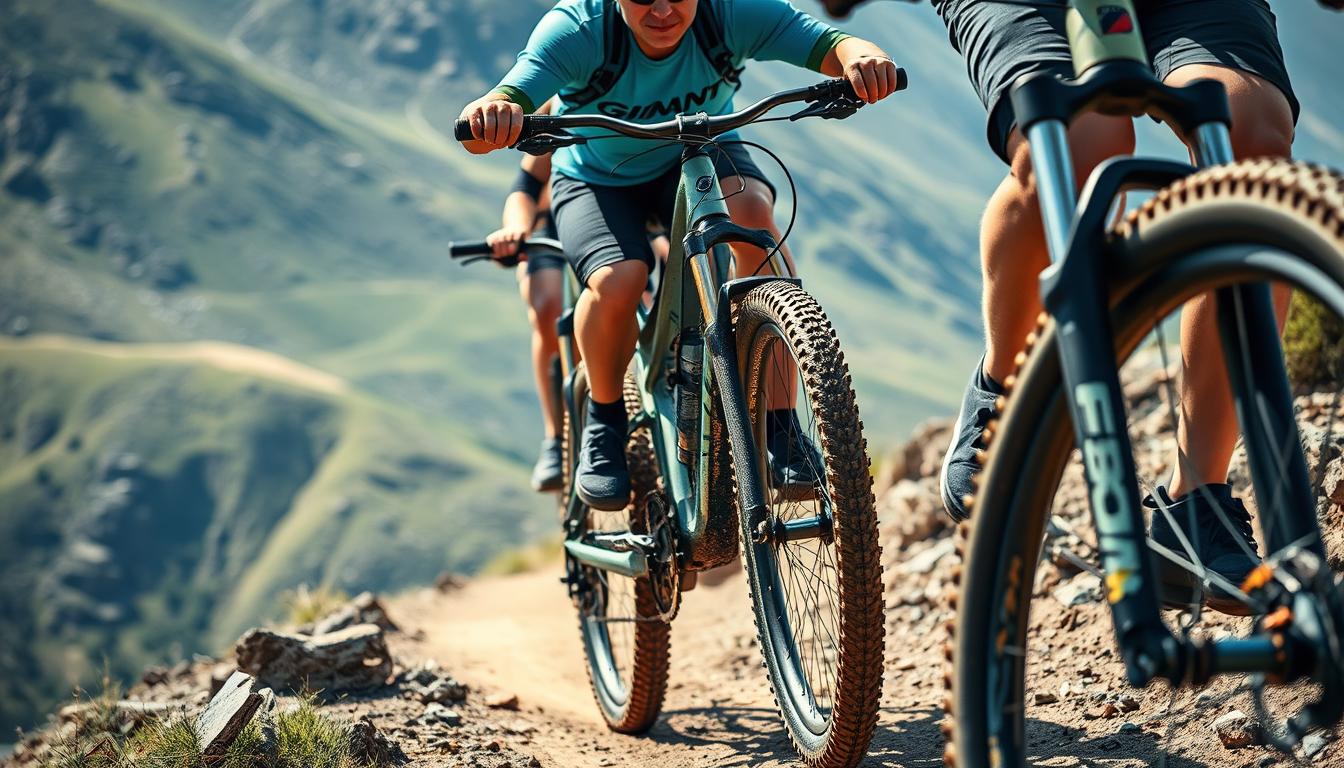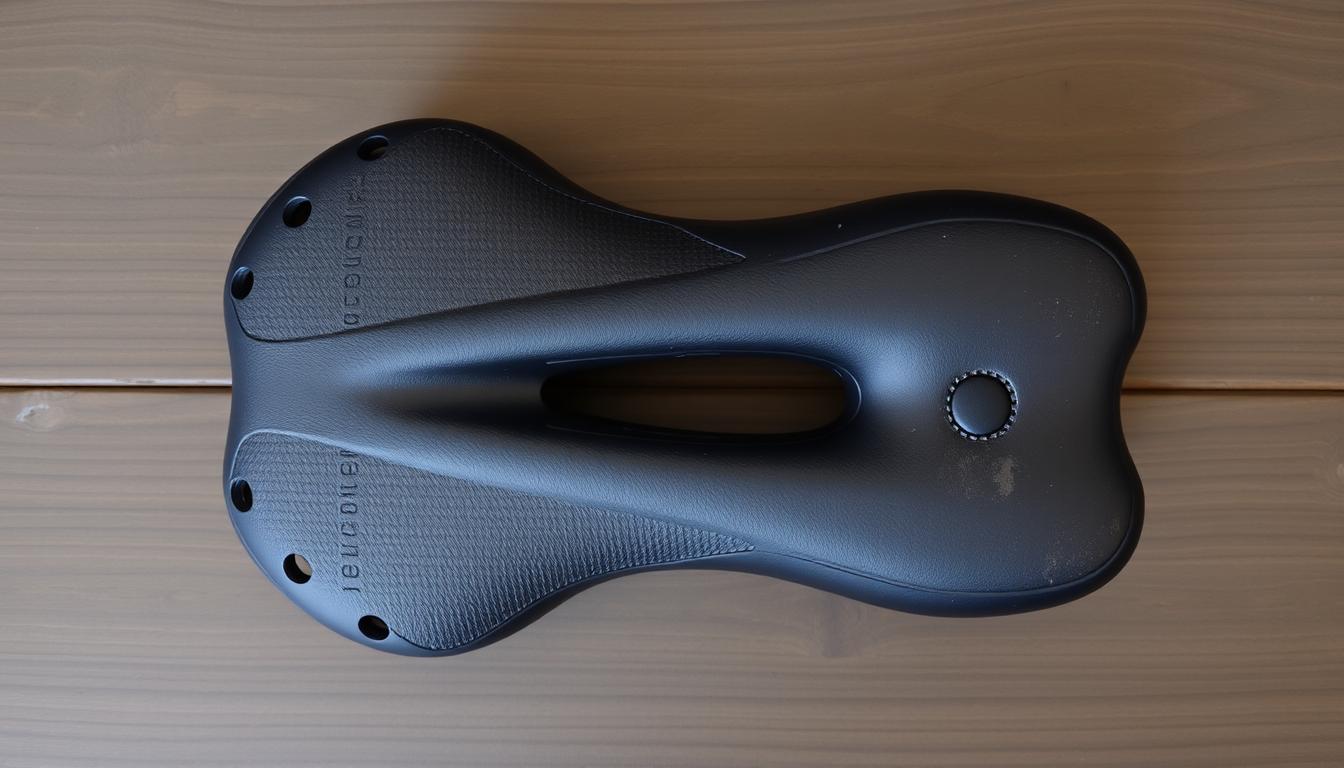Mountain bike grips are crucial for a great ride. They connect you to your bike, giving you comfort and control. When picking grips, think about their size, thickness, design, and materials. The best grips can improve your stability and performance on different types of ground. This guide will help you understand what to look for to match your riding style and the trails you tackle. For more insights, check out the comprehensive buyer’s guide.
Understanding the Importance of Mountain Bike Grips
Mountain bike grips are vital as they connect the rider to the bike. They work with the saddle and pedals to improve how you interact with your bike. Choosing the right grips boosts comfort and control, which can uplift your riding experience.
Contact Points Between Rider and Bike
Effective management of contact points can greatly increase comfort. Grips help lessen the shocks and vibrations from uneven grounds, making your ride smoother. The right grip size matters too. Bigger grips offer more surface area for control. Smaller grips suit those with tinier hands, ensuring a snug and comfortable fit.
Impact on Comfort and Control
Comfort and control are crucial when picking grips. Thin grips may offer better control but less cushioning, suiting control-focused riders. Thicker grips, on the other hand, are softer. They can reduce hand tiredness on prolonged rides. The material of the grips, like rubber or foam, also affects comfort and how well shocks are absorbed. For riders with sweaty hands, textured grips or gloves can make a big difference in controlling the bike.
There’s a range of styles and materials to choose from. Your personal preference and the kind of riding you do matter a lot in finding the perfect grips. For more tips on choosing the best mountain bike grips, check out this guide from All Mountain Style.
Factors to Consider When Choosing Mountain Bike Grips
When picking mountain bike grips, think about several key factors. How wide or thick the grip is, the style, and the material it’s made from all matter. These aspects influence how comfortable and in control you feel while riding.
Grip Width Considerations
Most mountain bike grips are about 130mm wide. This size works well for many riders, giving enough room without affecting control access. If your hands are smaller, you might like shorter grips for better reach. But, choosing longer grips could mean moving your controls, which might change how comfy you feel on your bike.
Grip Thickness for Comfort
Grip thickness varies with personal and riding style. Thicker grips soften the ride on bumpy paths but may reduce control. Thinner grips might offer better handling, crucial for cross-country riders. Ergonomic grips, designed for certain health issues, help ease wrist pressure.
Choosing the Right Grip Style
There are many grip styles, from ergonomic fits to simple foam or rubber. Each has its benefits, suited to various conditions and comfort levels. Ergonomic grips, for example, provide excellent support. This can improve your performance on longer rides.
Grip Compound and Durability
The material of your grips affects both comfort and how long they last. Silicone, foam, and rubber are common, each with unique benefits. Silicone lasts a while but might slip when it’s wet. Rubber grips are a good middle ground for both comfort and grip. Choose based on where you ride and your own likes.
Types of Grip Styles and Their Benefits
Mountain bike grips differ, each made for specific rider needs. They boost comfort and control on the trails. This makes biking more fun.
Ergonomic Grips for Better Hand Position
Ergonomic grips support your hands’ natural position and cut wrist strain. They keep the wrist and hand aligned. This reduces tiredness, great for long rides.
Foam vs. Rubber Grips
Foam grips are light and absorb shocks well. They are comfy for many. Rubber grips, however, last longer and are sturdy. They offer better grip in wet weather. The choice between foam and rubber depends on your riding style and preference.
Lock-on vs. Slide-on Grips
The choice between lock-on and slide-on grips is about security and easy fitting. Lock-on grips stay put, perfect for rough rides. Slide-on grips are lighter and need lubrication to fit but feel smooth. Each type meets different needs, balancing ease and weight.
Both grip types impact comfort while riding. Consider your grip preference, hand size, and the trails you ride. For more on choosing the right bike trail, see this guide.
Choosing Grips for Different Riding Conditions
Finding the right grips can make your time on the bike much better. You’ll get more comfort and have better control in different situations. From dealing with sweaty hands to solving hand pain, choosing the right grips is key. Each type of cycling needs specific grips that help you the most.
Grips for Sweaty Hands
If you often have sweaty hands when riding, look for grips with textures. These grips stick better to your hands, giving you more control. Lock-on grips with deep treads are great for not slipping. While gloves help a lot, the right textured grips can boost your performance too.
Grips for Riders with Hand Discomfort
For those who get hand pain, like from carpal tunnel, ergonomic grips are great. They help position your wrists better and spread out the pressure. This means less strain and more comfort on long rides. Foam grips from brands like ESI or Lizard Skins are good for lessening vibrations.
Special Considerations for Different Cycling Disciplines
The type of cycling you do affects what grips you should pick. Cross-country riders often want thinner grips for more control. Downhill riders might prefer thicker grips for better cushioning in rough conditions. Comfort handlebars with a bit of backsweep can also help reduce fatigue on long rides.
How to Test Grips for Comfort and Control
To properly test mountain bike grips, you need to actually use them on trails. This helps assess how comfortable and controllable they are under different conditions. There are some key points to help you test grips in real-life situations.
On-Trail Testing Insights
It’s crucial to try out grips directly on trails. This approach lets you see how well they work. You’ll get to understand their performance through:
- Descents where stable grips are a must
- Climbs that demand a steady hand
- Technical sections where control is key
Testing like this highlights if grips match your needs for comfort and control during varied activities.
Material and Texture Feel
The feel of a grip’s material matters a lot for comfort. Assessing materials helps find grips that prevent hand fatigue but still feel secure. Rubber or silicone grips are often best as they offer:
- Good cushioning from rubber grips
- Durability and weather resistance from silicone
Textures that provide traction, like fine diamond patterns, are crucial for wet or muddy rides. Choose grips that give you leverage and comfort, especially on tough terrains.
Top Recommendations for Mountain Bike Grips
Finding the right mountain bike grips improves your riding experience. It boosts comfort and control. Here are top picks across various categories to guide your choice.
Best Overall Mountain Bike Grips
The ODI Elite Pro grips are the best overall. They have an ergonomic design and half-waffle texture for comfort and control. They fit most riders with diameters from 30mm to 32mm. Their durability and versatility make them excellent.
Best Budget Options
For budget-friendly grips, check out the PNW Components Loam Grips. At about £18, they offer great value. Their spiral mushroom pattern provides traction and comfort in different conditions. These grips are top picks for those looking to save.
Grips for Specific Hand Sizes
Choosing grips for your hand size can boost comfort on long rides. The Wolf Tooth Fat Paw grips are great for larger hands. They offer a comfy hold thanks to their width and soft rubber. For smaller hands, the Race Face Half Nelson Grip is ideal. It has a narrower diameter for a secure grip. Picking based on hand size is key to finding the best grips.
Conclusion
Finding the right mountain bike grips is crucial for a better ride. They make riding more comfortable and improve control. This lets riders feel more confident on different terrains. To choose the best grips, consider their width, thickness, style, and material.
Those riding on rough terrains might prefer thicker grips for extra comfort. For better control, thinner grips work well. AMS makes special grips for all types of cycling. This means every rider can find grips that best suit their needs, making every trip enjoyable.
The grips you choose make a big difference in how comfortable and in control you feel. So, it’s smart to try out various grips. Look at their types and materials to find what works best for you. Doing this not only enhances your rides but also ensures they remain enjoyable for a long time.
FAQ
What are mountain bike grips and why are they important?
Mountain bike grips are crucial parts that connect you to your bike. They provide comfort, control, and stability across different terrains. This makes them key for a fun ride.
How does grip width affect my riding experience?
Grip width is usually about 130mm. It should be big enough but not get in the way of controls. People with smaller hands might like shorter grips. Others may need to adjust controls for longer grips to feel right.
What is the difference between foam and rubber grips?
Foam grips are light and absorb shock well but might not last long. Rubber grips are strong and give good grip but weigh more. Your choice depends on your riding style and conditions.
How can I choose grips that suit sweaty hands?
If your hands get sweaty, choose grips with textured surfaces. They help prevent slipping. Wearing gloves can also help with this issue.
Are ergonomic grips effective for riders with hand discomfort?
Yes, ergonomic grips support your wrists and hands to reduce strain. They’re great for those with carpal tunnel syndrome. This can make riding more comfortable.
What should I consider when testing grips for comfort and control?
Try your grips on different terrains to see how they perform. Notice how they feel when you go up hills, down hills, and on tricky paths. It’s important to see if they’re comfortable and secure in all situations.
What are the best mountain bike grips available?
The ODI Elite Pro grips are great for overall performance. PNW Components Loam Grips are good if you’re on a budget. Wolf Tooth Fat Paw grips suit those with bigger hands, and Race Face Half Nelson Grips are ideal for smaller hands.

